How to Be a Good Ventriloquist
Part 1 of 4:
Getting an Education in Ventriloquism
-
 Research other ventriloquists. Watch videos or go to a live show that another ventriloquist is putting on. You can pick up some tips and learn what works and what's funny, and what's not. Jeff Dunham, Ronn Lucas, Jay Johnson, or Terry Fator are examples of excellent ventriloquists that you can learn from.
Research other ventriloquists. Watch videos or go to a live show that another ventriloquist is putting on. You can pick up some tips and learn what works and what's funny, and what's not. Jeff Dunham, Ronn Lucas, Jay Johnson, or Terry Fator are examples of excellent ventriloquists that you can learn from. -
 Take ventriloquist lessons. If you truly want to be a ventriloquist, it's a great idea to take a few lessons. You'll learn about the types of puppets available as well as how to move them realistically. These lessons also focus on voice techniques and can help you learn how to talk without moving your lips like a pro! Look online to find ventriloquist lessons near you.[1]
Take ventriloquist lessons. If you truly want to be a ventriloquist, it's a great idea to take a few lessons. You'll learn about the types of puppets available as well as how to move them realistically. These lessons also focus on voice techniques and can help you learn how to talk without moving your lips like a pro! Look online to find ventriloquist lessons near you.[1] -
 Study the performing arts. Ventriloquists are performers, so it's only natural to study the performing arts. Take theatre, improv, music, or acting classes to hone your skills as a performer. You can also take voice lessons. Comedy, or comedic writing, classes would also be incredibly helpful for putting together a funny skit. Do an Internet search to find classes in your area.[2]
Study the performing arts. Ventriloquists are performers, so it's only natural to study the performing arts. Take theatre, improv, music, or acting classes to hone your skills as a performer. You can also take voice lessons. Comedy, or comedic writing, classes would also be incredibly helpful for putting together a funny skit. Do an Internet search to find classes in your area.[2]
Part 2 of 4:
Choosing and Animating Your Puppet
-
 Decide what kind of partner you want. You can choose a person or an animal as your partner. However, you must always make sure that the puppet's personality is different from your own, to give the illusion that you are not the same person. For instance, if you are a kind, responsible person, make your partner a mischievous jokester.[3]
Decide what kind of partner you want. You can choose a person or an animal as your partner. However, you must always make sure that the puppet's personality is different from your own, to give the illusion that you are not the same person. For instance, if you are a kind, responsible person, make your partner a mischievous jokester.[3]- If you are athletic and love watching sports, make your partner someone who hates watching football and loves going to the opera instead.
- Make your partner a scientist or mathematician if you are someone who prefers painting or sculpting, instead.
- Think about what kind of routine you wish to create and what personality would complement yours the best for creating this routine.
-
 Find a puppet that will fit that character. Look at the puppets' shape, size, age, and facial features. Also take note of their clothing and accessories. Choose a puppet that fits the character you created for your partner. For example, if your imagined character is a young, energetic boy, don't pick a puppet that's an old man or a young lady. If you imagined a sad, mangy dog as your partner, don't choose a shiny, happy-looking pup.[4]
Find a puppet that will fit that character. Look at the puppets' shape, size, age, and facial features. Also take note of their clothing and accessories. Choose a puppet that fits the character you created for your partner. For example, if your imagined character is a young, energetic boy, don't pick a puppet that's an old man or a young lady. If you imagined a sad, mangy dog as your partner, don't choose a shiny, happy-looking pup.[4]- You can choose a puppet with a hard figure (made out of wood) or soft figure (such as a cloth doll) as well as a 'novelty' figure (like a jalapeno).
- You can find a wide array of puppets to choose from online.
-
 Choose a puppet with a moving head. There are many different control schemes for puppets, but one with a moving head is excellent for beginners. Choose one where you put your hand in the back, grab a stick attached to the head, and push a trigger to move the mouth. This is key when animating your puppet, and works better than a puppet that uses a string on the neck to operate the mouth.[5]
Choose a puppet with a moving head. There are many different control schemes for puppets, but one with a moving head is excellent for beginners. Choose one where you put your hand in the back, grab a stick attached to the head, and push a trigger to move the mouth. This is key when animating your puppet, and works better than a puppet that uses a string on the neck to operate the mouth.[5]- Some puppets have other features, including the ability to move their eyebrows, lips, ears, and eyes.
-
 Convince yourself that your puppet is alive. You should act as though the puppet is alive from the moment you pick it out. Don't treat your puppet like a doll or toy, instead treat them like a part of your family! Play games with your partner, watch TV with them, and bring them to family get-togethers.[6]
Convince yourself that your puppet is alive. You should act as though the puppet is alive from the moment you pick it out. Don't treat your puppet like a doll or toy, instead treat them like a part of your family! Play games with your partner, watch TV with them, and bring them to family get-togethers.[6] -
 Create a life and backstory for your puppet. Have your puppet tell you stories about their life and experiences. Ask questions about their likes and dislikes, family, education, goals, hopes, and dreams. Even though you are technically making this up, it will help you believe that there is life in your partner.[7]
Create a life and backstory for your puppet. Have your puppet tell you stories about their life and experiences. Ask questions about their likes and dislikes, family, education, goals, hopes, and dreams. Even though you are technically making this up, it will help you believe that there is life in your partner.[7] -
 Direct the audience's eyes toward the puppet when they are 'speaking.' Ventriloquism, like magic, uses misdirection to make an act believable. If the audience is looking at the puppet, they won't see that you are, in fact, the one who is speaking. Move your puppet's mouth in time with every syllable of the words you are saying, and use their arms or body to gesture appropriately throughout their speech.[8]
Direct the audience's eyes toward the puppet when they are 'speaking.' Ventriloquism, like magic, uses misdirection to make an act believable. If the audience is looking at the puppet, they won't see that you are, in fact, the one who is speaking. Move your puppet's mouth in time with every syllable of the words you are saying, and use their arms or body to gesture appropriately throughout their speech.[8]- Be sure that the head isn't moving too much while they speak, or this will distract the audience from the actual speech. Try to observe real people as they speak, and have your partner mimic those movements.
-
 Keep your puppet moving. It's important to keep your puppet moving, even when you are speaking, to help the audience believe that they are real. Also, be sure the amount that they are moving is consistent with their character. For example, if they are young and energetic, have their head move quickly and shake while they're speaking. If they are an older person or a sleepy child, move their head slowly and not as often.[9]
Keep your puppet moving. It's important to keep your puppet moving, even when you are speaking, to help the audience believe that they are real. Also, be sure the amount that they are moving is consistent with their character. For example, if they are young and energetic, have their head move quickly and shake while they're speaking. If they are an older person or a sleepy child, move their head slowly and not as often.[9]- If your partner only moves their head, they will seem unrealistic to the audience. Move the rest of their body as well. For example, have them shift around on your knee or the stool they are sitting on, slump over, or stretch.
Part 3 of 4:
Working on Your Voice
-
 Learn to speak without moving your lips. Go through the alphabet without moving your lips. You'll notice that the letters "b," "f," "m," "p," "q," "v," and "w" will make your lips move. To say these without moving your lips, you must use substitutions. For "b," say "d" or "geh." For "f," say "th." For "m," say "n," "nah," or "neh." For "p," say "kl" or "t." For "q," say "koo." For "v," say "th," and for "w," say "ooh."[10]
Learn to speak without moving your lips. Go through the alphabet without moving your lips. You'll notice that the letters "b," "f," "m," "p," "q," "v," and "w" will make your lips move. To say these without moving your lips, you must use substitutions. For "b," say "d" or "geh." For "f," say "th." For "m," say "n," "nah," or "neh." For "p," say "kl" or "t." For "q," say "koo." For "v," say "th," and for "w," say "ooh."[10]- You may think the new words with the substituted letters sound ridiculous, but if you learn to put stress on the syllables that don't contain these letters, the words will begin to sound more natural.
- Hold a finger over your mouth as if trying to tell someone to be quiet to help prevent your lips from moving. Gritting your teeth together may also help.
-
 Practice 'throwing' your voice. Take a deep breath in through your nose. Raise your tongue so it is near, but not touching, the soft palate at the roof of your mouth. Contract your diaphragm by tightening your stomach muscles, and keep your airway constricted so breath is trapped in your throat. Speak while exhaling slowly so that your voice sounds distant.[11]
Practice 'throwing' your voice. Take a deep breath in through your nose. Raise your tongue so it is near, but not touching, the soft palate at the roof of your mouth. Contract your diaphragm by tightening your stomach muscles, and keep your airway constricted so breath is trapped in your throat. Speak while exhaling slowly so that your voice sounds distant.[11] -
 Change your voice. A convincing "vent" voice must be very different from yours. Listen to yourself speak. Do you speak loudly or softly? Fast or slow? Do you have a low voice or a high voice? Try to make your puppet's voice different from yours in all or most of these categories. To change your voice, you must speak from a different area, such as your nose or throat.[12]
Change your voice. A convincing "vent" voice must be very different from yours. Listen to yourself speak. Do you speak loudly or softly? Fast or slow? Do you have a low voice or a high voice? Try to make your puppet's voice different from yours in all or most of these categories. To change your voice, you must speak from a different area, such as your nose or throat.[12]- One excellent way to change your voice is to force air through your nose instead of your mouth when you speak.
- Another option is to force the sound from the diaphragm. Tighten your stomach muscles when speaking for a deeper, raspier voice.
-
 Choose your "vent" voice carefully depending on the puppet you chose. Think about whether your puppet's character would have an accent or a different way of speaking than you do. If your puppet is smart and witty, have them speak eloquently, without stuttering. If they are unintelligent or slow, have them speak in a low, slow voice.[13]
Choose your "vent" voice carefully depending on the puppet you chose. Think about whether your puppet's character would have an accent or a different way of speaking than you do. If your puppet is smart and witty, have them speak eloquently, without stuttering. If they are unintelligent or slow, have them speak in a low, slow voice.[13]- The voice you choose helps to amplify your puppet's personality and brings them to life.
- For example, if you're from the south, you may want to create a fast-talking Yankee voice for your partner.
- Alternatively, you could choose a relaxed, French accent to complement your own midwestern way of speech.
Part 4 of 4:
Putting on a Good Show
-
 Create believable dialogue. You'll need to have a realistic conversation with your puppet on stage. Listen to the way you and friends talk to each other, or pay attention to other people's conversations. Add pauses, 'ums' and 'ers,' sighs, and huffs into your conversations. Not only will these things make your dialogue more believable, they are easy to do without moving your lips![14]
Create believable dialogue. You'll need to have a realistic conversation with your puppet on stage. Listen to the way you and friends talk to each other, or pay attention to other people's conversations. Add pauses, 'ums' and 'ers,' sighs, and huffs into your conversations. Not only will these things make your dialogue more believable, they are easy to do without moving your lips![14]- Practice interrupting your puppet and your puppet interrupting you to make your dialogue more believable.
-
 Practice your routine. Though some people may be able to easily do an improv skit, it's best if you prepare and practice your jokes and routine ahead of time. Work on throwing your voice and speaking without moving your lips in addition to moving your puppet realistically and in time with what they are 'saying.'[15]
Practice your routine. Though some people may be able to easily do an improv skit, it's best if you prepare and practice your jokes and routine ahead of time. Work on throwing your voice and speaking without moving your lips in addition to moving your puppet realistically and in time with what they are 'saying.'[15]- Practice every day if you want to make ventriloquism your career.
-
 Watch yourself in a mirror or on film. Practice in front of a mirror so you can see what the audience will see. Alternatively, you could record your performance and then watch it play back to get a good idea of how you look and sound to the audience. Tweak your routine based on these practice sessions so that you are fully prepared for a live show.
Watch yourself in a mirror or on film. Practice in front of a mirror so you can see what the audience will see. Alternatively, you could record your performance and then watch it play back to get a good idea of how you look and sound to the audience. Tweak your routine based on these practice sessions so that you are fully prepared for a live show. -
 Develop a strong stage presence. People enjoy watching others that have charisma, keep an optimistic attitude, and display positive energy. You (and your puppet!) can make use of the space on stage, make eye contact with various members of the audience, and be animated throughout your routine. Use lots of gestures and facial expressions to draw people's attention to you and your puppet.[16]
Develop a strong stage presence. People enjoy watching others that have charisma, keep an optimistic attitude, and display positive energy. You (and your puppet!) can make use of the space on stage, make eye contact with various members of the audience, and be animated throughout your routine. Use lots of gestures and facial expressions to draw people's attention to you and your puppet.[16]- Choose an outfit that makes you feel comfortable and confident, and do the same for your puppet!
- You could have your puppet choose a member of the audience to speak to. People will enjoy being included in the show.
-
 Have fun with it. A big factor in being a good ventriloquist is having passion. If the audience can tell that you are having a good time, they will have a good time too. Whether you are taking up ventriloquism for fun or for a career, make sure you are enjoying it.
Have fun with it. A big factor in being a good ventriloquist is having passion. If the audience can tell that you are having a good time, they will have a good time too. Whether you are taking up ventriloquism for fun or for a career, make sure you are enjoying it.- Always entertain people in good humor, rather than using your puppet to lash out at specific groups or people.
4 ★ | 1 Vote






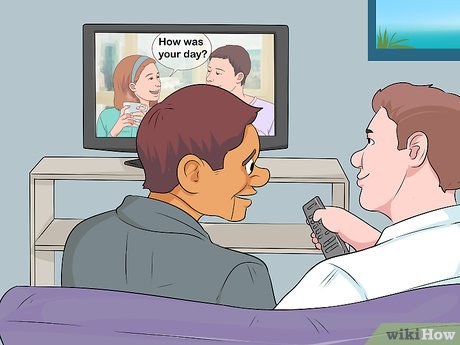


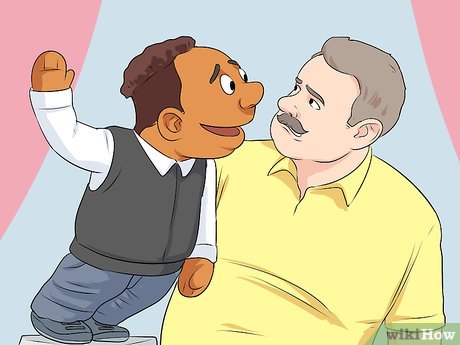
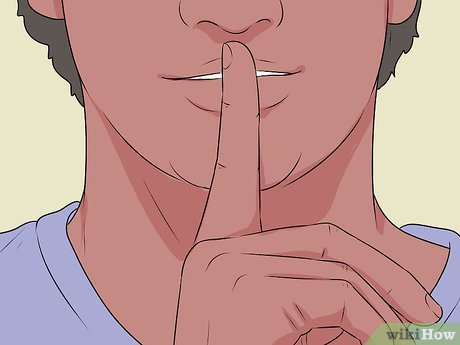
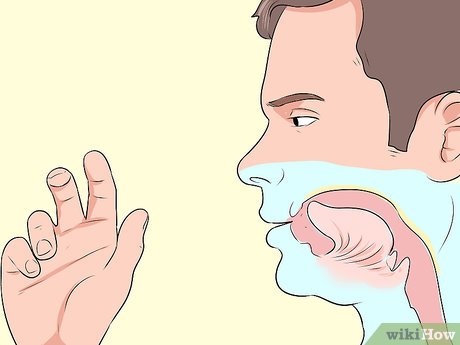


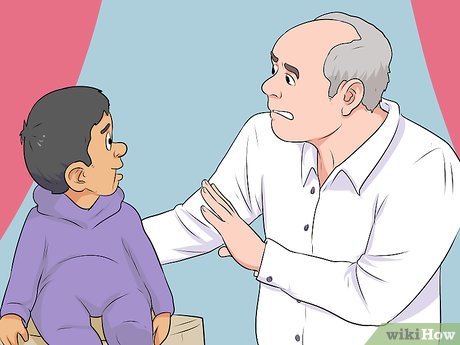

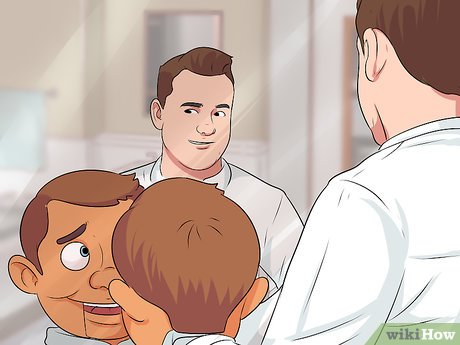


 How to Be a Good Entertainer
How to Be a Good Entertainer How to Be Talented in Multiple Areas
How to Be Talented in Multiple Areas How to Sell Your Music
How to Sell Your Music How to Become a Better Artist
How to Become a Better Artist How to Be Well Read
How to Be Well Read Google honors Vietnamese bread
Google honors Vietnamese bread